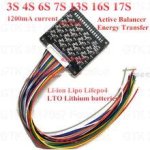Inwo
10 kW
There are many new active balance boards showing up from China. I have tested most of them, if anyone needs an opinion before ordering.
It was requested that I do a more thorough test of the potted 4s board by a boat owner using 4s 60ah LiFePo4 for starting battery.
Getting to the end of test. I won't bother to list all the data points. Most important is how it finishes.
Test started by discharging #2 till dead <2v and charging #3 till near full.
.15 shunts to measure average current in and out.
Less than 2ma drain with switch off. Does not appear to be zero when using shunts.
The most current measured is less that 1.5 amps. However 5 amps has been seen by a user with an overcharged cell. Not me!
This is where it's at after about 3 days:
Cells 1-4
3.278 -142ma
3.239 +124ma
3.323 -68ma
3.292 -1.3ma
Differences between + & – may be test errors or losses. Ie. discharging more than charging.
Also expect high cell #3 to be discharging more than #1.
Who knows. Going the right direction in any case!
I have the same ones in 16s and 20s if someone wants to test and not wait for China.
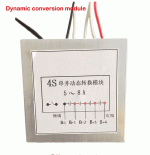
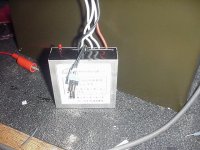
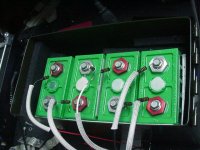
Shows current and waveform on balance leads only.
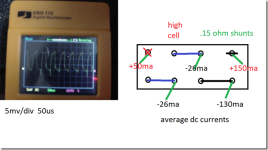
It was requested that I do a more thorough test of the potted 4s board by a boat owner using 4s 60ah LiFePo4 for starting battery.
Getting to the end of test. I won't bother to list all the data points. Most important is how it finishes.
Test started by discharging #2 till dead <2v and charging #3 till near full.
.15 shunts to measure average current in and out.
Less than 2ma drain with switch off. Does not appear to be zero when using shunts.
The most current measured is less that 1.5 amps. However 5 amps has been seen by a user with an overcharged cell. Not me!
This is where it's at after about 3 days:
Cells 1-4
3.278 -142ma
3.239 +124ma
3.323 -68ma
3.292 -1.3ma
Differences between + & – may be test errors or losses. Ie. discharging more than charging.
Also expect high cell #3 to be discharging more than #1.
Who knows. Going the right direction in any case!
I have the same ones in 16s and 20s if someone wants to test and not wait for China.



Shows current and waveform on balance leads only.



